The new Skull King!
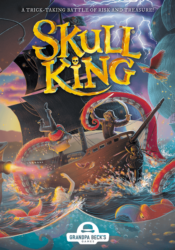
Three years ago we played a family card game that immediately became a family favorite. We played it over and over and quickly reviewed it to share why we enjoyed playing it so much.
The game was Skull King, by Grandpa Beck’s Games, and the enjoyment we get out of playing hasn’t subsided at all since then!
If anything, we’ve enjoyed it more and more over the years.
And now, there’s a new version of Skull King to love!
We were very excited when we found out Grandpa Beck’s Games was updating Skull King with a few new twists. And now that we’ve had time to play it over and over, we’re excited to tell you all about it.
What’s new in Skull King 2021
The general game play in the new version of Skull King is the same as it has always been. Players bid on the number of tricks they’ll win during a round and score points based on how well they do on their bids (and potential bonus points). Each round players are dealt more and more cards. In round 1, players each get 1 card. By round 10, each player is dealt 10 cards. So the bidding gets trickier as the game goes on and the potential points to gain (or lose) each round also ramps up.
To get a rundown of the full game play, jump back over to our original review of Skull King.
Now on to what’s new…(starting with the minor changes and building up)
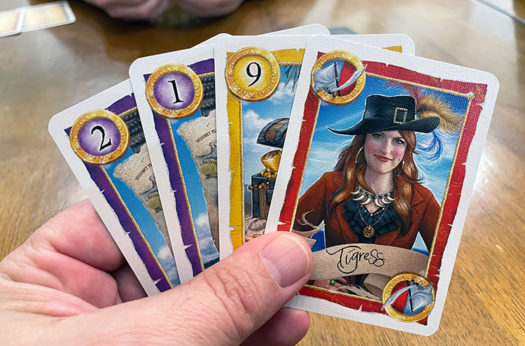
Artwork
For starters, the artwork on the cards has been slightly updated. While the artwork is nice and crisp, there really are just slight differences in the visual elements on the cards – the numbers, the rings around the numbers, etc. You can see the difference in a number of photos included in this review (with the old on the left and new on the right).
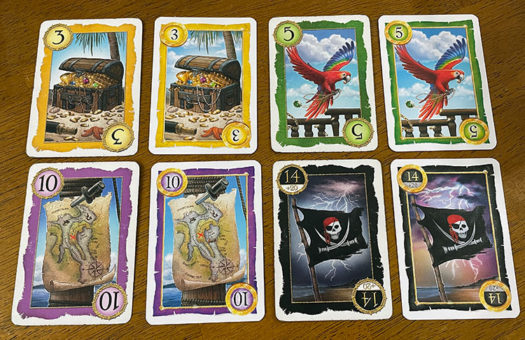
Bid Cards
Another slight change is in how players show their bids for each round. In the prior version, large number cards were distributed to each player showing their bid. In this new version, each player has 2 cards with numbers on them. One card has numbers 0-4 and the other 5-9. After players bid, they then each display their bid by laying one card on the other just under the number of their bid.
So if I bid 3, then I’ll take the 5-9 card and place it facedown on the 0-4 card so that the highest number visible is the 3.
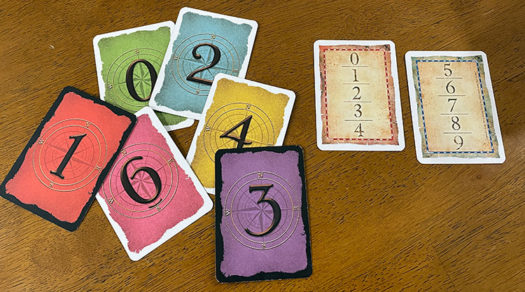
Displaying the bids this way saves a bit of time after everyone bids because each player adjusts their own cards simultaneously and they don’t have to wait for one person to deal out the number cards after each bid and then recollect them at the end of each round.
While we like that efficiency, the numbers just aren’t as big to see across a table when you’re playing with a lot of players. However, these just act as reminders for all players to remember during a round who is trying for how many tricks.
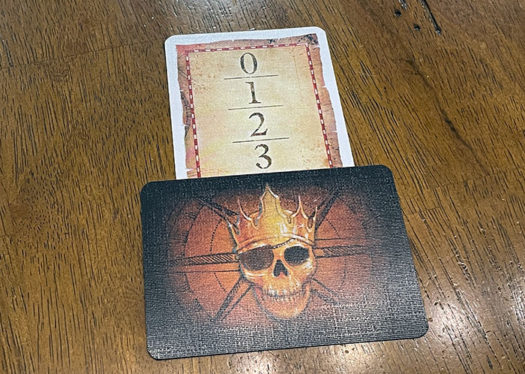
Bonus Scoring
Another slight change in the game is the bonus point scoring. As in the original, players get 10 or 20 bonus points for taking the 14 value of the colored cards. And when the Loot is played and both players get their bids correct, they each get 20 bonus points.
Pirates captured with the Skull King still grant 30 bonus points. However, there’s a rule change that the order in which the pirates and Skull King are played doesn’t matter. Any pirates taken in a trick where the Skull King wins grant 30 points — regardless whether they were played before or after the Skull King.
In the original, a mermaid capturing the Skull King granted 50 bonus points. But this new version puts those bonus points at 40. And when a pirate captures a mermaid, the player gets 20 bonus points.
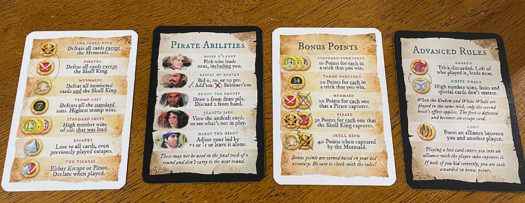
Now on to the bigger changes…
Rascal Scoring
A new, optional way of scoring is also introduced called The Rascal’s Scoring.
Each round, players have the same potential points regardless of bids. Players can get 10 points for each card dealt that round. If players get their bid correct, they get all of their potential points. If they’re off by only 1 on their bid, they get just half of the points. And if they’re off by 2 or more, they score nothing that round.
The same applies to the bonuses as well — getting all, half, or none of the points.
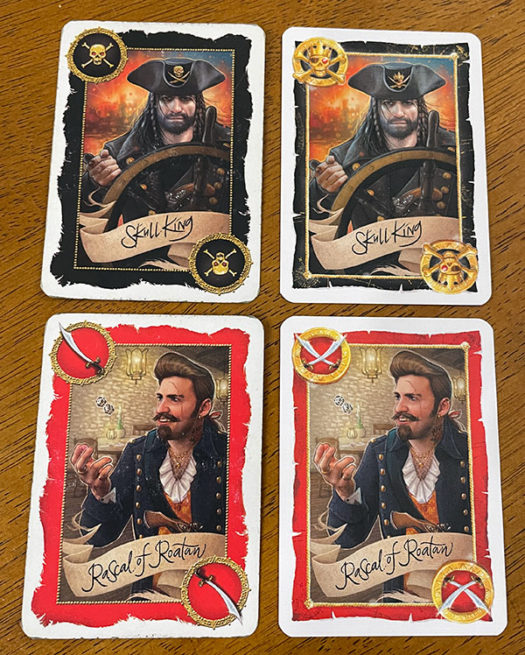
Cannonball or Grapeshot
In addition, players may choose to add this twist to their scoring. After simultaneously revealing bids, players will then simultaneously reveal if they’re going to score with Cannonball (closed fist) or Grapeshot (open hand).
With Grapeshot, the player follows the Rascal Scoring outlined above.
With Cannonball, the player earns 15 points for each card dealt that round (instead of 10) if they get their bid correct. But if they’re off even by 1, then they score 0 that round.
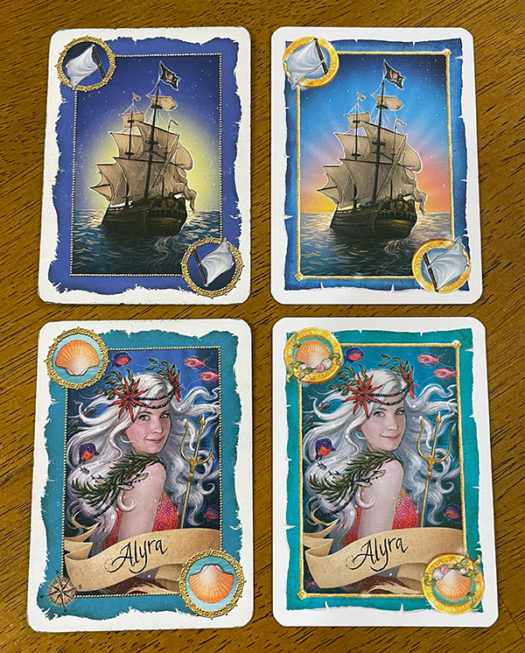
2-Player Rules
The new version of Skull King also throws in rules for playing with just 2 players. (Which is great for mom and dad now that the kids are out of the nest.)
When playing with just 2 players, a third hand is dealt to Greybeard’s Ghost (his hand of cards remaining facedown). He doesn’t bid, nor does he score any points.
Each round, players alternate who leads out. Regardless of who leads out though, Greybeard’s Ghost goes second. Players simply flip of his top card and add it to the trick. When he wins a trick, he also leads out the next trick.
The rules states that he’s just there “to aggravate others” and we can attest that he definitely does that!
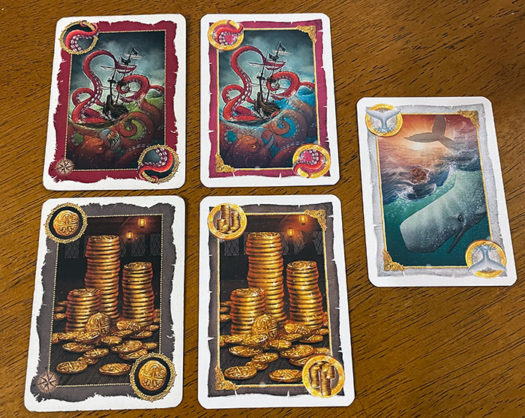
Whale of a Tale
The biggest change in the game comes from 1 single card — the White Whale!
With the advanced rules in the original game, players had to watch out for the Kraken that completely destroys a trick. Well, that Kraken is still alive and kickin’ in the new version, plus there’s now a White Whale to mix things up in different ways.
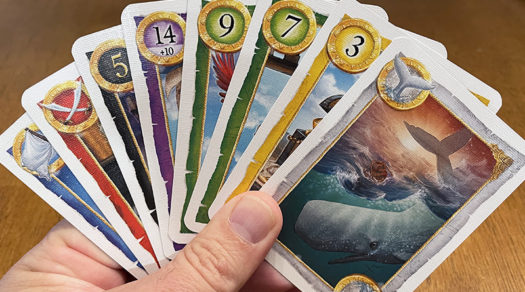
When the White Whale appears in a trick, all special cards change to Escape cards. That means the power of the pirates, mermaids, loot, and Skull King evaporate. And all numbered cards (including the black suit) change to white in terror.
As such, the highest number card played (regardless of suit) wins the trick!
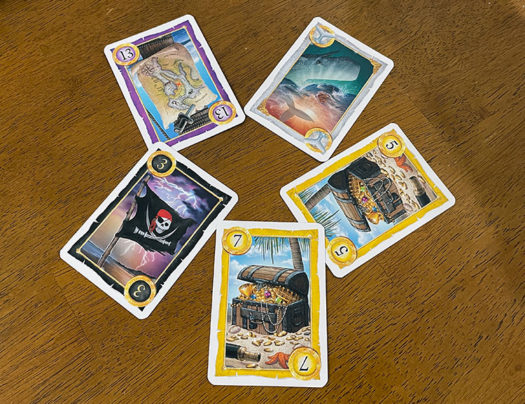
If there’s a tie on highest number, the first one of that number played wins the trick.
Also, if the White Whale and the Kraken are both played in a trick, they battle. And in all of these battles, the second to be played wins the trick.
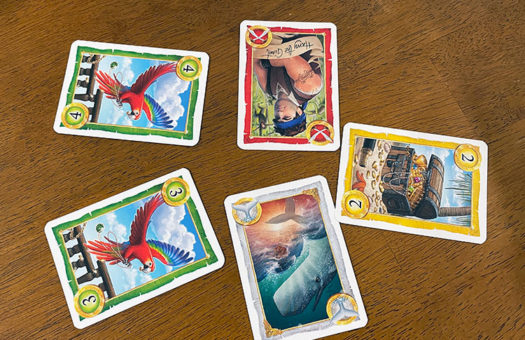
Which Skull King are we playing now?
The Skull King ship we’re sailing on going forward is totally the new version!
Looking at the two games critically, we know the only real big difference in the games is the White Whale. The bonus point scoring changes and the Rascal’s Scoring can be put into play with the original game cards as well. And just knowing the 2-player rules is enough to play that same way with the original deck of cards.
However, we really love the White Whale addition. Sure it’s just 1 card in a deck of 74, but just the chance that it may be in a player’s hand adds a fun twist to the game that we really enjoy.
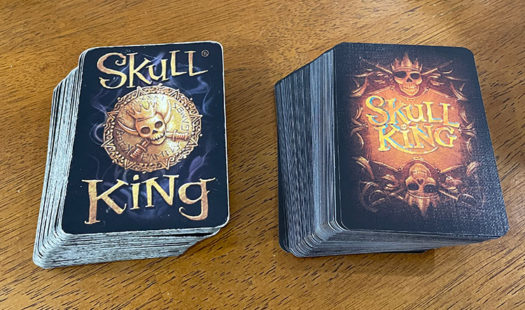
Perhaps it’s because we’ve played Skull King so much that we love any little addition or twist here and there. We’ve played many games making up our own twists as well and have had a great time.
A few of the twists we’ve played:
- Players don’t look at their cards before bidding and have to bid blindly.
- Players don’t look at their cards, but instead hold them out so everyone else can see each other’s cards before bidding.
- Bidding in turn order rather than simultaneously.
- When a pirate wins a trick, the player to the left gets to use the pirate ability.
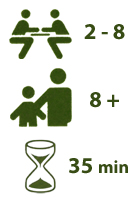 Oh, and it’s nice to have a new pad of scoresheets!
Oh, and it’s nice to have a new pad of scoresheets!
(We burned through the original scoresheets quickly and have been printing out sheets ever since.)
If you haven’t guessed, we highly recommend getting a copy of Skull King for your family!
As an Amazon Associate, we earn from qualifying purchases from Amazon.com links.
We’d like to thank Grandpa Beck’s Games for a review copy of the new Skull King.




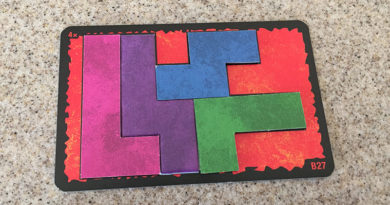
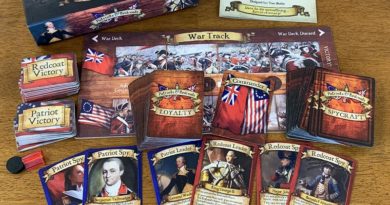
we didn’t get a whale card with our skull king game. so wondering what you recommend doing.
Krista – My guess is that the edition you have isn’t the newest edition. You could contact the publisher. Each copy of a Grandpa Beck’s Games has contact information and they’re very responsive.
bonjour,
nous venons d’avoir le jeu skull king. nous nous posons une question. si nous n’avons pas la couleur demandée mais que nous avons de l’atout, sommes nous obligés de jouer notre carte atout ou pouvons nous jouer une carte d’une autre couleur ?